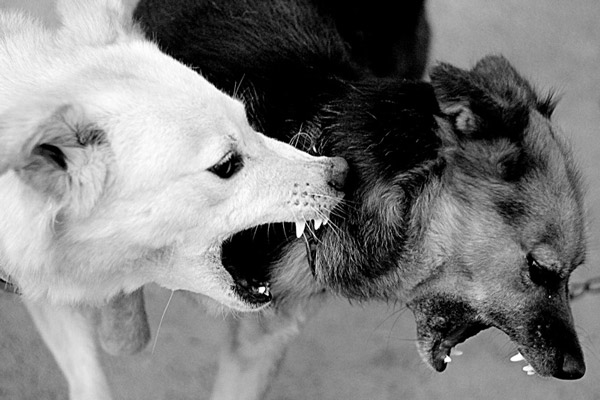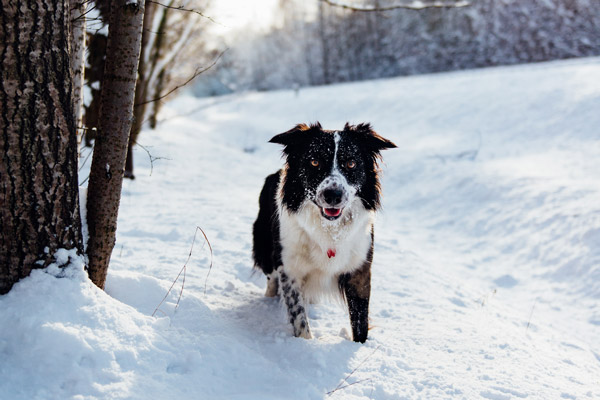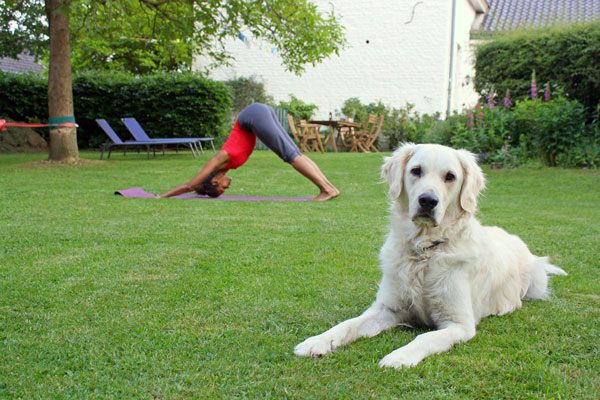Are you thinking of adding a new dog to your life? Would you like your current dog to be better behaved? Would you like to train your dog to serve your needs instead being trained to serve its needs? Attending dog classes led by a professional trainer is the best approach, but not everyone can afford classes. These tips are a good start to training your canine companion. There are many philosophies and approaches to dog training, so do your research and learn what works for you and your dog.[1]
Preparing for Dog Training
Choose a dog that fits your lifestyle. After centuries of breeding, the modern dog is one of the most varied species of animal on earth. While there’s probably a dog to suit every lifestyle, not all dogs will fit your specific needs. For example, if you like to relax, you should not get a Jack Russell Terrier, known for its constant barking and high energy.[2] Instead, you might want a bulldog that would much prefer to cuddle on the couch all day.[3] Research the personalities and care requirements of various breeds. Ask dog owners about their breed’s personality.
- Since most dogs live for 10 – 15 years, getting a dog is a long-term commitment. Make sure the breed’s temperament is a good match for your lifestyle.
- If you haven’t yet started a family, consider whether you’ll have young children around the house in the next decade. Some breeds are not recommended for households with children.
Don’t get an aspirational dog. Be honest with yourself about the compatibility of the dog you want with your lifestyle. Don’t get a dog that needs a lot of activity just because you want a reason to jumpstart a healthier lifestyle yourself. If you can’t follow through on exercising your high-energy dog, you and the dog will both end up frustrated.
- Write down the needs and temperament of the breed, as well as how you will meet those needs.
- If it’s going to take significant effort to change your lifestyle, you need to choose a different dog.
Give your dog a practical name. He needs to be able to learn his name easily, so you can hold his attention during training. The name should also have clear, hard sounds the dog can recognize. Names such as “Buddy” or “Rover” or “Bee Bee” have distinct sounds that stand out from the regular flood of human speech your dog hears.
- Use your dog’s name often when you are playing, petting him, training him, or need to get his attention.
- If your dog looks at you when you say his name, you know he’s learned it.
- Create a positive association with his name so he’ll continue to focus on you when you say it. Praise him when he responds to his name, and give him treats.
Schedule enough time for training. You’ll need to set aside 15 – 20 minutes a couple of times each day for formal training sessions. Puppies have a short attention span and get bored easily, just like a toddler would.
- Those sessions are not the only time you’ll train your dog, though. Training actually happens throughout the day when interacting with your pet. He’s learning from you every time you interact.
- Bad dog habits develop when owners let dogs get away with bad behavior outside of dedicated training sessions. So, always keep an eye on your dog outside of training sessions. If he knows it during training sessions, then make sure he remembers it outside of training.
Prepare your mental state for training sessions. When you’re working with your dog, be calm and neutral. Any form of agitation and excitement on your part will negatively affect the outcome of training. You should be mindful of the fact that the goal of training is to be able to reinforce good dog behavior and to ignore or not reinforce bad ones. It may sound strict but producing a well trained dog requires the determination and conviction to see it through.
Applying General Training Principles
Manage your expectations and mood. Not every training day is going to be perfect, but don’t get frustrated and don’t take it out on your dog. Adjust your own behavior and attitude to encourage your dog’s ability and confidence to learn. If you have a calm mood, generally your dog will, too.
- If the dog becomes afraid of your bad mood, he will not learn anything new. He’ll only learn to be wary and not trust you.
- Dog training classes and a good trainer can help you improve your behavior which will translate to success with your dog.
Keep your dog’s temperament in mind. All dogs have different temperaments. Just like kids, different breeds learn differently and at different rates. Some dogs are stubborn and will challenge you at every turn. Others will bend over backwards to please you. You may need to adjust your training techniques to meet the need of your dog’s temperament.
Give immediate rewards. Dogs don’t understand long-term cause and effects. They learn fast. You must praise or reward your dog within 2 seconds of a desired behavior to reinforce that behavior. If you wait too long, he will not associate the reward with the action you asked him to perform.
- Furthermore, you must make sure that your praise is fast enough to be accurate. Otherwise, you may reward behaviors that you don’t want.
- Imagine, for example, that you are teaching your dog the “sit” command. He sits for just a moment, but by the time you praise and reward him, he’s started standing back up. In this case, you are rewarding the standing behavior, not the sitting behavior.
Consider clicker training. Clicker training is a method of delivering immediate praise with the help of a clicker. You can click faster than you can give a treat or pet your dog’s head. As such, clicker training reinforces good behavior fast enough for a dog’s learning speed. It works by creating a positive association between the click sound and rewards. Eventually, your dog will consider the sound of the clicker itself reward enough for good behavior. You can apply the principle of clicker training to any dog command.
- Click the clicker device, then immediately give the dog a treat. This creates a positive association with the click sound. Later, that sound will “mark” a behavior as correct so the dog knows that he did something right.
- When the dog performs a desired behavior, make the click sound, then give him a treat. Once he’s performing that behavior consistently, you can give the behavior a command name. Begin tying the command and the behavior together with the help of the clicker.
- For example, before you ever teach your dog the “sit” command, give the click sound, a treat, and praise when you find him sitting. When he begins sitting just to get the treats, start saying the word “sit” to get him into position. Pair it with the click sound to reward him. Eventually, he will learn that sitting in response to the “sit” command will earn him a click reward.
Be consistent. Your dog won’t understand what you want from him if his environment lacks consistency. Everyone who lives with your dog should understand and be on board with his training goals. For example, if you are training your dog not to jump on people, don’t let the kids allow the dog jump all over them. This will undermine all the training you’ve done.
- Make sure everyone uses the exact commands your dog learns in training. He doesn’t speak English, and can’t tell the difference between “sit” and “sit down.” Using those terms interchangeably will only confuse him.
- Because he won’t make a clear connection between a single command and a single action, his response to the command will be hit or miss.
Always reward success and good behavior with praise, and sometimes a small treat. Small treats help motivate your dog to learn his training. The treat needs to be small, tasty, and easily chewed. You don’t want it to interrupt the training session or make them full too quickly.
- Consider how long it takes to chew a hard treat versus a semi-moist treat like “Bill Jack” or “Zuke’s Mini Naturals.” Treats about the size of a pencil eraser head are enough to get the positive point across, and you don’t have to wait long for your dog to eat it.
Use “high value” treats when needed. When teaching difficult or important a command, use a “high value” treat to raise the stakes for him. Examples include freeze-dried liver, roasted chicken breast chunks, or slices of turkey lunch meat.
- As the dog learns the command, phase out the high value treats and bring them back as needed to advance your training, but always give him praise.
Train on an empty stomach. Don’t feed as large a meal as usual a few hours before training your dog. The more your dog wants the treat, the more focused he’ll be on the task he needs to perform to get it.
Always end training on a positive note. Even if the training session did not go well and your dog didn’t catch on to a new command, end on something that you can praise him for. By ending the training session with a command he’s already mastered, the last thing he remembers will be your love and praise.
Discourage barking. If your dog barks at you when you don’t want him to, just ignore him until he stops, and then reward him with praise. Sometimes they bark at you for attention, while other times it may be out of frustration.
- Do not throw a ball or toy. This only teaches him that if he barks, he’ll get you to do something he wants.
- Don’t yell at the dog to be quiet, as this rewards him with attention.







